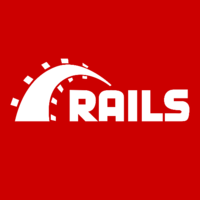What is AWS OpsWorks and what are its top alternatives?
AWS OpsWorks is a configuration management service that helps automate the deployment, scaling, and management of applications on AWS. Key features include automated server provisioning, application deployment, and monitoring tools. However, OpsWorks has limitations such as being tightly integrated with AWS services, which may not be suitable for those looking for more vendor-agnostic solutions.
- Chef Automate: Chef Automate is a configuration management tool that provides infrastructure automation, compliance, and application deployment across a multi-cloud environment. Key features include fast and reliable automation, compliance reporting, and visibility into the infrastructure. Pros include robust automation capabilities, while cons may include a steep learning curve.
- Puppet Enterprise: Puppet Enterprise is an automation platform that helps manage infrastructure as code, enforce security policies, and streamline operations. Key features include centralized control, role-based access control, and reporting and auditing capabilities. Pros include the ability to manage diverse infrastructure, while cons may include complex configuration.
- Ansible Tower: Ansible Tower is a configuration management tool that provides a web-based interface for managing Ansible automation. Key features include role-based access control, job scheduling, and powerful REST API. Pros include easy-to-use interface, while cons may include limited scalability for larger environments.
- SaltStack Enterprise: SaltStack Enterprise is an automation platform that provides event-driven orchestration, infrastructure automation, and configuration management. Key features include dynamic infrastructure discovery, powerful remote execution, and event-driven automation. Pros include scalable architecture, while cons may include a steeper learning curve.
- Red Hat OpenShift: Red Hat OpenShift is a container platform that helps automate application deployment, scaling, and management. Key features include Kubernetes-based orchestration, container security, and integration with CI/CD pipelines. Pros include support for hybrid cloud environments, while cons may include complexity in setting up and managing the platform.
- Google Cloud Deployment Manager: Google Cloud Deployment Manager is a service that allows users to create and manage cloud resources using templates. Key features include infrastructure as code, declarative configuration, and support for a wide range of GCP services. Pros include seamless integration with Google Cloud, while cons may include limited support for multi-cloud environments.
- Azure Automation: Azure Automation is a service that helps automate the creation, deployment, and management of resources in the Azure cloud. Key features include graphical and text-based authoring tools, role-based access control, and integration with Azure services. Pros include seamless integration with Azure services, while cons may include limited support for hybrid cloud environments.
- HashiCorp Terraform: HashiCorp Terraform is an infrastructure as code tool that helps provision and manage cloud resources across multi-cloud environments. Key features include declarative configuration, execution plans, and resource graph visualization. Pros include support for multiple cloud providers, while cons may include a learning curve for beginners.
- Rundeck: Rundeck is an open-source automation platform that helps automate operational tasks, runbook automation, and job scheduling. Key features include self-service portals, auditing and logging, and integration with existing tools and scripts. Pros include extensibility and flexibility, while cons may include a lack of enterprise support features.
- Octopus Deploy: Octopus Deploy is a release orchestration and automation tool that helps automate the deployment of applications and services. Key features include deployment pipeline automation, release dashboard, and integration with popular CI/CD tools. Pros include ease of use and flexibility, while cons may include a focus on deployment rather than infrastructure management.
Top Alternatives to AWS OpsWorks
 Chef
ChefChef enables you to manage and scale cloud infrastructure with no downtime or interruptions. Freely move applications and configurations from one cloud to another. Chef is integrated with all major cloud providers including Amazon EC2, VMWare, IBM Smartcloud, Rackspace, OpenStack, Windows Azure, HP Cloud, Google Compute Engine, Joyent Cloud and others. ...
 AWS Elastic Beanstalk
AWS Elastic BeanstalkOnce you upload your application, Elastic Beanstalk automatically handles the deployment details of capacity provisioning, load balancing, auto-scaling, and application health monitoring. ...
 AWS Config
AWS ConfigAWS Config is a fully managed service that provides you with an AWS resource inventory, configuration history, and configuration change notifications to enable security and governance. With AWS Config you can discover existing AWS resources, export a complete inventory of your AWS resources with all configuration details, and determine how a resource was configured at any point in time. These capabilities enable compliance auditing, security analysis, resource change tracking, and troubleshooting. ...
 AWS CloudFormation
AWS CloudFormationYou can use AWS CloudFormation’s sample templates or create your own templates to describe the AWS resources, and any associated dependencies or runtime parameters, required to run your application. You don’t need to figure out the order in which AWS services need to be provisioned or the subtleties of how to make those dependencies work. ...
 AWS CodeDeploy
AWS CodeDeployAWS CodeDeploy is a service that automates code deployments to Amazon EC2 instances. AWS CodeDeploy makes it easier for you to rapidly release new features, helps you avoid downtime during deployment, and handles the complexity of updating your applications. ...
 Beanstalk
BeanstalkA single process to commit code, review with the team, and deploy the final result to your customers. ...
 Ansible
AnsibleAnsible is an IT automation tool. It can configure systems, deploy software, and orchestrate more advanced IT tasks such as continuous deployments or zero downtime rolling updates. Ansible’s goals are foremost those of simplicity and maximum ease of use. ...
 Terraform
TerraformWith Terraform, you describe your complete infrastructure as code, even as it spans multiple service providers. Your servers may come from AWS, your DNS may come from CloudFlare, and your database may come from Heroku. Terraform will build all these resources across all these providers in parallel. ...
AWS OpsWorks alternatives & related posts
- Dynamic and idempotent server configuration110
- Reusable components76
- Integration testing with Vagrant47
- Repeatable43
- Mock testing with Chefspec30
- Ruby14
- Can package cookbooks to guarantee repeatability8
- Works with AWS7
- Has marketplace where you get readymade cookbooks3
- Matured product with good community support3
- Less declarative more procedural2
- Open source configuration mgmt made easy(ish)2
related Chef posts
In late 2013, the Operations Engineering team at PagerDuty was made up of 4 engineers, and was comprised of generalists, each of whom had one or two areas of depth. Although the Operations Team ran its own on-call, each engineering team at PagerDuty also participated on the pager.
The Operations Engineering Team owned 150+ servers spanning multiple cloud providers, and used Chef to automate their infrastructure across the various cloud providers with a mix of completely custom cookbooks and customized community cookbooks.
Custom cookbooks were managed by Berkshelf, andach custom cookbook contained its own tests based on ChefSpec 3, coupled with Rspec.
Jenkins was used to GitHub for new changes and to handle unit testing of those features.
Since #ATComputing is a vendor independent Linux and open source specialist, we do not have a favorite Linux distribution. We mainly use Ubuntu , Centos Debian , Red Hat Enterprise Linux and Fedora during our daily work. These are also the distributions we see most often used in our customers environments.
For our #ci/cd training, we use an open source pipeline that is build around Visual Studio Code , Jenkins , VirtualBox , GitHub , Docker Kubernetes and Google Compute Engine.
For #ServerConfigurationAndAutomation, we have embraced and contributed to Ansible mainly because it is not only flexible and powerful, but also straightforward and easier to learn than some other (open source) solutions. On the other hand: we are not affraid of Puppet Labs and Chef either.
Currently, our most popular #programming #Language course is Python . The reason Python is so popular has to do with it's versatility, but also with its low complexity. This helps sysadmins to write scripts or simple programs to make their job less repetitive and automating things more fun. Python is also widely used to communicate with (REST) API's and for data analysis.
AWS Elastic Beanstalk
- Integrates with other aws services77
- Simple deployment65
- Fast44
- Painless28
- Free16
- Well-documented4
- Independend app container3
- Postgres hosting2
- Ability to be customized2
- Charges appear automatically after exceeding free quota2
- Lots of moving parts and config1
- Slow deployments0
related AWS Elastic Beanstalk posts
Back in 2014, I was given an opportunity to re-architect SmartZip Analytics platform, and flagship product: SmartTargeting. This is a SaaS software helping real estate professionals keeping up with their prospects and leads in a given neighborhood/territory, finding out (thanks to predictive analytics) who's the most likely to list/sell their home, and running cross-channel marketing automation against them: direct mail, online ads, email... The company also does provide Data APIs to Enterprise customers.
I had inherited years and years of technical debt and I knew things had to change radically. The first enabler to this was to make use of the cloud and go with AWS, so we would stop re-inventing the wheel, and build around managed/scalable services.
For the SaaS product, we kept on working with Rails as this was what my team had the most knowledge in. We've however broken up the monolith and decoupled the front-end application from the backend thanks to the use of Rails API so we'd get independently scalable micro-services from now on.
Our various applications could now be deployed using AWS Elastic Beanstalk so we wouldn't waste any more efforts writing time-consuming Capistrano deployment scripts for instance. Combined with Docker so our application would run within its own container, independently from the underlying host configuration.
Storage-wise, we went with Amazon S3 and ditched any pre-existing local or network storage people used to deal with in our legacy systems. On the database side: Amazon RDS / MySQL initially. Ultimately migrated to Amazon RDS for Aurora / MySQL when it got released. Once again, here you need a managed service your cloud provider handles for you.
Future improvements / technology decisions included:
Caching: Amazon ElastiCache / Memcached CDN: Amazon CloudFront Systems Integration: Segment / Zapier Data-warehousing: Amazon Redshift BI: Amazon Quicksight / Superset Search: Elasticsearch / Amazon Elasticsearch Service / Algolia Monitoring: New Relic
As our usage grows, patterns changed, and/or our business needs evolved, my role as Engineering Manager then Director of Engineering was also to ensure my team kept on learning and innovating, while delivering on business value.
One of these innovations was to get ourselves into Serverless : Adopting AWS Lambda was a big step forward. At the time, only available for Node.js (Not Ruby ) but a great way to handle cost efficiency, unpredictable traffic, sudden bursts of traffic... Ultimately you want the whole chain of services involved in a call to be serverless, and that's when we've started leveraging Amazon DynamoDB on these projects so they'd be fully scalable.
We initially started out with Heroku as our PaaS provider due to a desire to use it by our original developer for our Ruby on Rails application/website at the time. We were finding response times slow, it was painfully slow, sometimes taking 10 seconds to start loading the main page. Moving up to the next "compute" level was going to be very expensive.
We moved our site over to AWS Elastic Beanstalk , not only did response times on the site practically become instant, our cloud bill for the application was cut in half.
In database world we are currently using Amazon RDS for PostgreSQL also, we have both MariaDB and Microsoft SQL Server both hosted on Amazon RDS. The plan is to migrate to AWS Aurora Serverless for all 3 of those database systems.
Additional services we use for our public applications: AWS Lambda, Python, Redis, Memcached, AWS Elastic Load Balancing (ELB), Amazon Elasticsearch Service, Amazon ElastiCache
AWS Config
- Backed by Amazon4
- One stop solution2
- Not user friendly2
related AWS Config posts
From firebase Crashlytics, everything is simple, we install SDK and configs, and then we can see all the crashes. With AWS, it is not clear to me which service to use for the same purpose as configuring it. Correctly I understand that for automatic sending of all crashes, you need to use AWS Config?
AWS Config seems quite enough to make us compliant and secure. Why should I consider other external products? I try to achieve - Get notified on Jira Management Desk when an configuration alarm is generated. - Customize infra alarms - Get compliant for SOC2 Type 2.
- Automates infrastructure deployments43
- Declarative infrastructure and deployment21
- No more clicking around13
- Any Operative System you want3
- Atomic3
- Infrastructure as code3
- CDK makes it truly infrastructure-as-code1
- Automates Infrastructure Deployment1
- K8s0
- Brittle4
- No RBAC and policies in templates2
related AWS CloudFormation posts
 Amazon S3
Amazon S3 Amazon EC2
Amazon EC2 AWS Elastic Load Balancing (ELB)
AWS Elastic Load Balancing (ELB) AWS CloudFormation
AWS CloudFormation Terraform
TerraformWe use Terraform because we needed a way to automate the process of building and deploying feature branches. We wanted to hide the complexity such that when a dev creates a PR, it triggers a build and deployment without the dev having to worry about any of the 'plumbing' going on behind the scenes. Terraform allows us to automate the process of provisioning DNS records, Amazon S3 buckets, Amazon EC2 instances and AWS Elastic Load Balancing (ELB)'s. It also makes it easy to tear it all down when finished. We also like that it supports multiple clouds, which is why we chose to use it over AWS CloudFormation.
Yesterday we moved away from using CloudFlare towards Amazon Route 53 for a few reasons. Although CloudFlare is a great platform, once you reach almost a 100% AWS Service integration, it makes it hard to still use CloudFlare in the stack. Also being able to use Aliases for DNS makes it faster because instead of doing a CNAME and an A record lookup, you will be able to receive the A records from the end services directly. We always loved working with CloudFlare , especially for DNS as we already used Amazon CloudFront for CDN. But having everything within AWS makes it "cleaner" when deploying automatically using AWS CloudFormation. All that aside, the main reason for moving towards Amazon Route 53 for DNS is the ability to do geolocation and latency based DNS responses. Doing this outside the AWS console would increase the complexity.
- Automates code deployments17
- Backed by Amazon9
- Adds autoscaling lifecycle hooks7
- Git integration5
related AWS CodeDeploy posts
The recent move of our CI/CD tooling to AWS CodeBuild / AWS CodeDeploy (with GitHub ) as well as moving to Amazon EC2 Container Service / AWS Lambda for our deployment architecture for most of our services has helped us significantly reduce our deployment times while improving both feature velocity and overall reliability. In one extreme case, we got one service down from 90 minutes to a very reasonable 15 minutes. Container-based build and deployments have made so many things simpler and easier and the integration between the tools has been helpful. There is still some work to do on our service mesh & API proxy approach to further simplify our environment.
At Kloud.io we use Node.js for our backend Microservices and Angular 2 for the frontend. We also use React for a couple of our internal applications. Writing services in Node.js in TypeScript improved developer productivity and we could capture bugs way before they can occur in the production. The use of Angular 2 in our production environment reduced the time to release any new features. At the same time, we are also exploring React by using it in our internal tools. So far we enjoyed what React has to offer. We are an enterprise SAAS product and also offer an on-premise or hybrid cloud version of #kloudio. We heavily use Docker for shipping our on-premise version. We also use Docker internally for automated testing. Using Docker reduced the install time errors in customer environments. Our cloud version is deployed in #AWS. We use AWS CodePipeline and AWS CodeDeploy for our CI/CD. We also use AWS Lambda for automation jobs.
- Ftp deploy14
- Deployment9
- Easy to navigate8
- Code Editing4
- HipChat Integration4
- Integrations4
- Code review3
- HTML Preview2
- Security1
- Blame Tool1
- Cohesion1
related Beanstalk posts
Ansible
- Agentless284
- Great configuration210
- Simple199
- Powerful176
- Easy to learn155
- Flexible69
- Doesn't get in the way of getting s--- done55
- Makes sense35
- Super efficient and flexible30
- Powerful27
- Dynamic Inventory11
- Backed by Red Hat9
- Works with AWS7
- Cloud Oriented6
- Easy to maintain6
- Vagrant provisioner4
- Simple and powerful4
- Multi language4
- Simple4
- Because SSH4
- Procedural or declarative, or both4
- Easy4
- Consistency3
- Well-documented2
- Masterless2
- Debugging is simple2
- Merge hash to get final configuration similar to hiera2
- Fast as hell2
- Manage any OS1
- Work on windows, but difficult to manage1
- Certified Content1
- Dangerous8
- Hard to install5
- Doesn't Run on Windows3
- Bloated3
- Backward compatibility3
- No immutable infrastructure2
related Ansible posts
Often enough I have to explain my way of going about setting up a CI/CD pipeline with multiple deployment platforms. Since I am a bit tired of yapping the same every single time, I've decided to write it up and share with the world this way, and send people to read it instead ;). I will explain it on "live-example" of how the Rome got built, basing that current methodology exists only of readme.md and wishes of good luck (as it usually is ;)).
It always starts with an app, whatever it may be and reading the readmes available while Vagrant and VirtualBox is installing and updating. Following that is the first hurdle to go over - convert all the instruction/scripts into Ansible playbook(s), and only stopping when doing a clear vagrant up or vagrant reload we will have a fully working environment. As our Vagrant environment is now functional, it's time to break it! This is the moment to look for how things can be done better (too rigid/too lose versioning? Sloppy environment setup?) and replace them with the right way to do stuff, one that won't bite us in the backside. This is the point, and the best opportunity, to upcycle the existing way of doing dev environment to produce a proper, production-grade product.
I should probably digress here for a moment and explain why. I firmly believe that the way you deploy production is the same way you should deploy develop, shy of few debugging-friendly setting. This way you avoid the discrepancy between how production work vs how development works, which almost always causes major pains in the back of the neck, and with use of proper tools should mean no more work for the developers. That's why we start with Vagrant as developer boxes should be as easy as vagrant up, but the meat of our product lies in Ansible which will do meat of the work and can be applied to almost anything: AWS, bare metal, docker, LXC, in open net, behind vpn - you name it.
We must also give proper consideration to monitoring and logging hoovering at this point. My generic answer here is to grab Elasticsearch, Kibana, and Logstash. While for different use cases there may be better solutions, this one is well battle-tested, performs reasonably and is very easy to scale both vertically (within some limits) and horizontally. Logstash rules are easy to write and are well supported in maintenance through Ansible, which as I've mentioned earlier, are at the very core of things, and creating triggers/reports and alerts based on Elastic and Kibana is generally a breeze, including some quite complex aggregations.
If we are happy with the state of the Ansible it's time to move on and put all those roles and playbooks to work. Namely, we need something to manage our CI/CD pipelines. For me, the choice is obvious: TeamCity. It's modern, robust and unlike most of the light-weight alternatives, it's transparent. What I mean by that is that it doesn't tell you how to do things, doesn't limit your ways to deploy, or test, or package for that matter. Instead, it provides a developer-friendly and rich playground for your pipelines. You can do most the same with Jenkins, but it has a quite dated look and feel to it, while also missing some key functionality that must be brought in via plugins (like quality REST API which comes built-in with TeamCity). It also comes with all the common-handy plugins like Slack or Apache Maven integration.
The exact flow between CI and CD varies too greatly from one application to another to describe, so I will outline a few rules that guide me in it: 1. Make build steps as small as possible. This way when something breaks, we know exactly where, without needing to dig and root around. 2. All security credentials besides development environment must be sources from individual Vault instances. Keys to those containers should exist only on the CI/CD box and accessible by a few people (the less the better). This is pretty self-explanatory, as anything besides dev may contain sensitive data and, at times, be public-facing. Because of that appropriate security must be present. TeamCity shines in this department with excellent secrets-management. 3. Every part of the build chain shall consume and produce artifacts. If it creates nothing, it likely shouldn't be its own build. This way if any issue shows up with any environment or version, all developer has to do it is grab appropriate artifacts to reproduce the issue locally. 4. Deployment builds should be directly tied to specific Git branches/tags. This enables much easier tracking of what caused an issue, including automated identifying and tagging the author (nothing like automated regression testing!).
Speaking of deployments, I generally try to keep it simple but also with a close eye on the wallet. Because of that, I am more than happy with AWS or another cloud provider, but also constantly peeking at the loads and do we get the value of what we are paying for. Often enough the pattern of use is not constantly erratic, but rather has a firm baseline which could be migrated away from the cloud and into bare metal boxes. That is another part where this approach strongly triumphs over the common Docker and CircleCI setup, where you are very much tied in to use cloud providers and getting out is expensive. Here to embrace bare-metal hosting all you need is a help of some container-based self-hosting software, my personal preference is with Proxmox and LXC. Following that all you must write are ansible scripts to manage hardware of Proxmox, similar way as you do for Amazon EC2 (ansible supports both greatly) and you are good to go. One does not exclude another, quite the opposite, as they can live in great synergy and cut your costs dramatically (the heavier your base load, the bigger the savings) while providing production-grade resiliency.
Heroku was a decent choice to start a business, but at some point our platform was too big, too complex & too heterogenic, so Heroku started to be a constraint, not a benefit. First, we've started containerizing our apps with Docker to eliminate "works in my machine" syndrome & uniformize the environment setup. The first orchestration was composed with Docker Compose , but at some point it made sense to move it to Kubernetes. Fortunately, we've made a very good technical decision when starting our work with containers - all the container configuration & provisions HAD (since the beginning) to be done in code (Infrastructure as Code) - we've used Terraform & Ansible for that (correspondingly). This general trend of containerisation was accompanied by another, parallel & equally big project: migrating environments from Heroku to AWS: using Amazon EC2 , Amazon EKS, Amazon S3 & Amazon RDS.
Terraform
- Infrastructure as code122
- Declarative syntax73
- Planning45
- Simple28
- Parallelism24
- Well-documented8
- Cloud agnostic8
- It's like coding your infrastructure in simple English6
- Immutable infrastructure6
- Platform agnostic5
- Extendable4
- Automation4
- Automates infrastructure deployments4
- Portability4
- Lightweight2
- Scales to hundreds of hosts2
- Doesn't have full support to GKE1
related Terraform posts
 Google Cloud IoT Core
Google Cloud IoT Core Terraform
Terraform Python
Python Google Cloud Deployment Manager
Google Cloud Deployment Manager Google Cloud Build+6 more
Google Cloud Build+6 moreContext: I wanted to create an end to end IoT data pipeline simulation in Google Cloud IoT Core and other GCP services. I never touched Terraform meaningfully until working on this project, and it's one of the best explorations in my development career. The documentation and syntax is incredibly human-readable and friendly. I'm used to building infrastructure through the google apis via Python , but I'm so glad past Sung did not make that decision. I was tempted to use Google Cloud Deployment Manager, but the templates were a bit convoluted by first impression. I'm glad past Sung did not make this decision either.
Solution: Leveraging Google Cloud Build Google Cloud Run Google Cloud Bigtable Google BigQuery Google Cloud Storage Google Compute Engine along with some other fun tools, I can deploy over 40 GCP resources using Terraform!
Check Out My Architecture: CLICK ME
Check out the GitHub repo attached
 Heroku
Heroku Kubernetes
Kubernetes Google Kubernetes Engine
Google Kubernetes Engine Google Cloud SQL for PostgreSQL
Google Cloud SQL for PostgreSQL PostgreSQL+6 more
PostgreSQL+6 moreWe recently moved our main applications from Heroku to Kubernetes . The 3 main driving factors behind the switch were scalability (database size limits), security (the inability to set up PostgreSQL instances in private networks), and costs (GCP is cheaper for raw computing resources).
We prefer using managed services, so we are using Google Kubernetes Engine with Google Cloud SQL for PostgreSQL for our PostgreSQL databases and Google Cloud Memorystore for Redis . For our CI/CD pipeline, we are using CircleCI and Google Cloud Build to deploy applications managed with Helm . The new infrastructure is managed with Terraform .
Read the blog post to go more in depth.





































